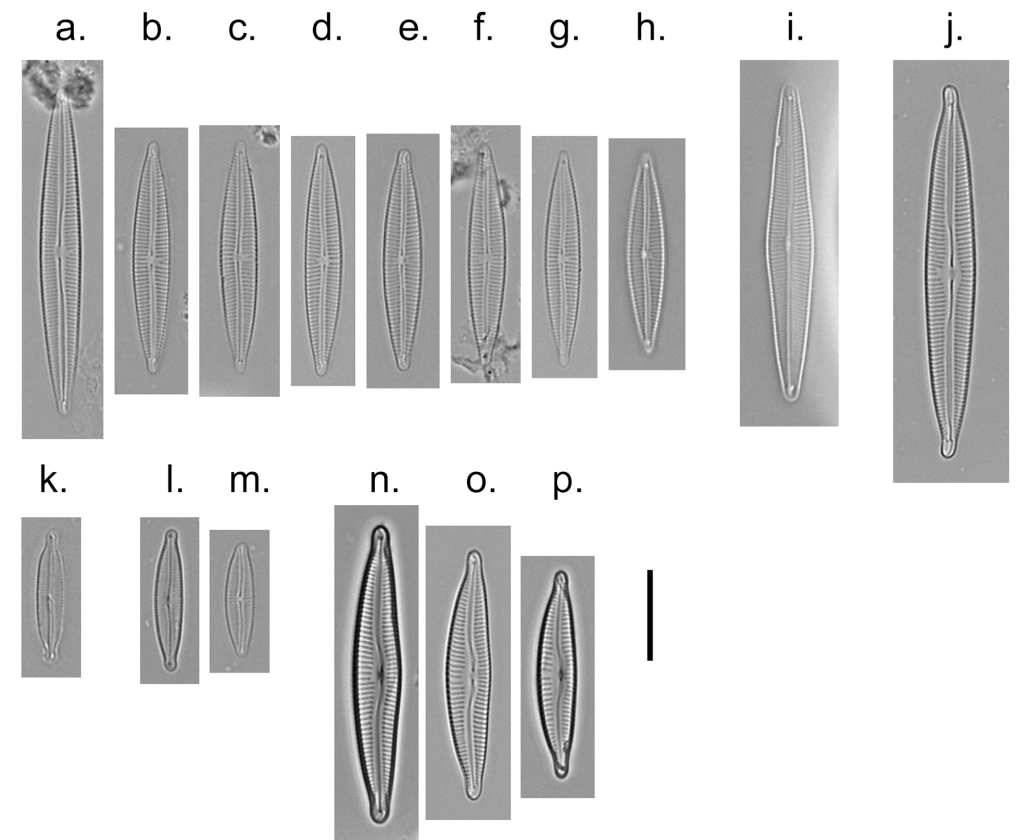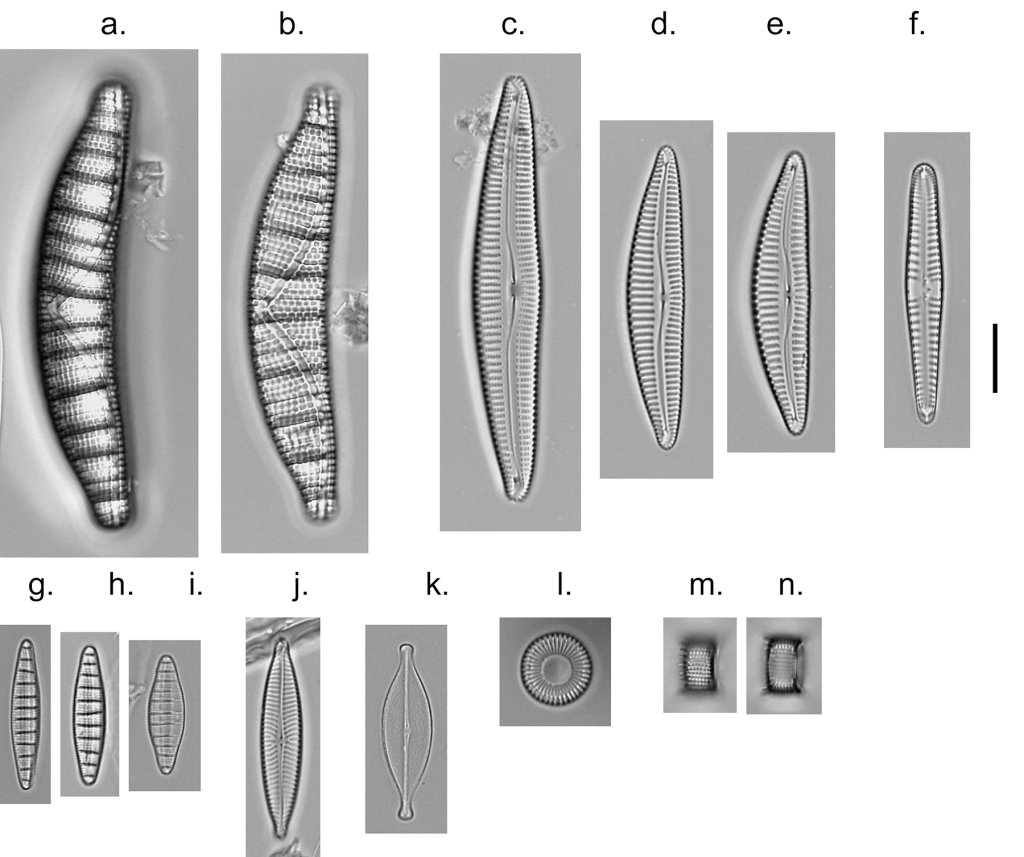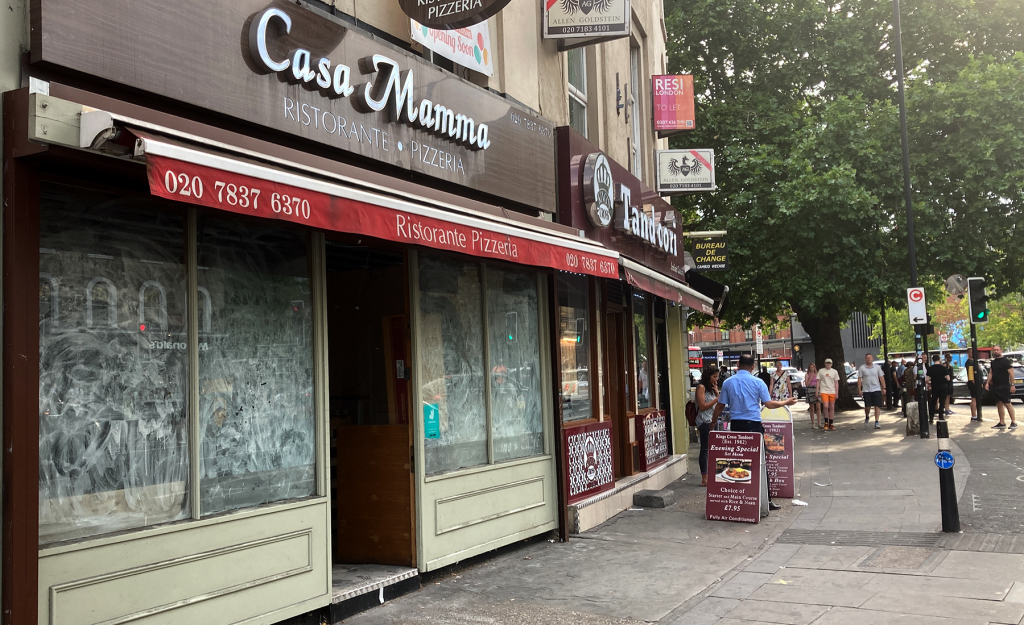My trip to the Burren seems like an age ago now, but I’ve finally got around to looking at the diatoms in the Ophyridium versatile colony that I collected from the shore of Lough Gealáin (see “Intimate strangers …”). In my earlier post I commented on the presence of many small diatoms, mostly Encyonopsis, that I could see but not easily photograph. Now that I have got a properly cleaned sample, I can look at it under high magnification and try to put names onto the organisms present.
My brief analysis found 32 species of diatom and confirmed that Encyonopsis was the most abundant genus. In fact, I found at least five different species of Encyonopsis in the sample, the most abundant of which was E. cesatii. There were, in addition, quite a lot of Delicatophycus delicatulus (hard to differentiate from Encyonopsis at lower magnifications), as well as Cymbella and Cymbopleura species. All of these would have been classified as “Cymbella” thirty years ago, but taxonomic revisions, of the types discussed in the previous posts, have exploded this genus. Quite what it is about this family that helps them to thrive in Ophyridium colonies is not clear.
The genus Encyonopsis, itself, has also exploded into many parts. In the first edition of the Süsswasser-flora von Mitteleuropa from 1930, Hustedt described two species of Cymbella that would now be regarded as species of Encyonopsis. In the second edition (1986), there were three Cymbella species that fit the current definition of Encyonopsis but Algaebase now lists 149 valid species names for the genus. To return to the theme of the previous post, we have learnt to look at Encyonopsis differently over the past 30 years. And, having done so, we begin to make sense of their distribution patterns, as Bryan Kennedy showed in a recent paper based on data from Irish lakes.
Quite what it is about this family that helps them to thrive in Ophyridium colonies is not clear. Encyonopsis species tend to be highly motile, so would be well-adapted to moving through the gel matrix of the Ophyridium colony. However, Cymbella species tend to attached to surfaces via stalks, a very different strategy. Are they temporary residents on the outside of colonies whilst the Encyonopsis lives within?

Other diatoms found within the colonies include a species of Epithemia, last encountered in Cassop Pond (see: “The diatoms of Cassop pond”). Its presence here may well suggest that the Ophyridium colony is short of nitrogen for at least part of the time. I also found several valves of Denticula tenuis, a species that can survive periods of desiccation. All are telling me fragments of a bigger story without necessarily telling me the same story. Just as Andy Warhol said “in the future, everyone will be world-famous for 15 minutes” so, in the microscopic world, every diatom has its brief moment when conditions are just so, before there is a change in circumstances and another diatom moves centre stage. One of the explanations for the incredible diversity of diatoms is simply that their environments are never in equilibrium for long enough for “survival of the fittest” to have any traction. Instead, we have a basketful of species, each with a different “superpower”, just waiting for their time to come.

Reference
Kennedy, B., Buckley, Y., & Allott, N. (2019). Taxonomy, ecology and analysis of type material of some small Encyonopsis with description of new species in Ireland. Phytotaxa 395: 89-128.
Some other highlights from this week:
Wrote this whilst listening to: Gris Gris, 1968 album by Dr John who I saw in similarly hot weather at Glastonbury in 2010.
Currently reading: Sagittarius Rising by Cecil Lewis.
Cultural highlight: In the Heights, also set in a heatwave.
Culinary highlight: riding out the heatwave with homemade gazpacho. The culinary low point of my week was learning that Casa Mama, my trusty Italian trattoria that, for a quarter of a century, fuelled me with pasta, pizza and red wine before boarding a train at King’s Cross station, has closed. There are two types of Italian restaurant: the ones where the waiters say “prego” when they put food in front of you and the ones that don’t. Casa Mama was in the former category, and all the better for it.

